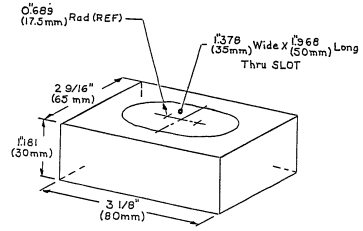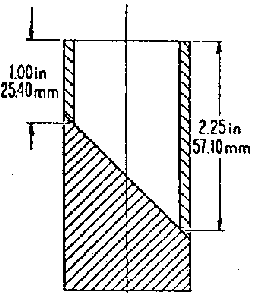MY VERY OWN RATTLE®
Home Page
Wholesale
FAQ
Cleaning, color, etc
Packaging
|
MY VERY OWN® Rattle, manufactured in Morrisville, Vermont, USA,
is exempt from all 3rd party testing requirements under CPSC regulation.
As a Small Batch product (CPSC Small Batch Registration Number 018102-022019),
it is exempt from annual testing for mechanical and toxic hazard.
MY VERY OWN® Rattle greatly exceeds CPSC standards for resistance to breakage
and deformation resistance.
See mechanical
safety requirements below
Small Batch Manufacturer Registration Number:
018102-032023
Reference:
Small
Batch Manufacturers and Third Party Testing (CPSC page)
Current Batch
Number: 2301
MY VERY OWN® Rattle is
not subject to the mandatory requirements for testing for Lead and Phthalates
required by CPSIA2008, because the product to be used by a child is unfinished,
untreated, natural wood, unaltered from its natural state. This statement
has been confirmed by the CPSC Ombudsman, Will Cusey.
MY VERY OWN® Rattle was tested for CE (European
Union) compliance in 1995 and is CE Certified, demonstrating absence of Lead,
Phthalates, and other toxins above specified limits. The standards are
essentially similar to that of CPSIA 2008, and also include testing of the
packaging.
The following
paragraphs regarding testing for chemical hazard were excerpted in 2008 from “Frequently Asked Questions”
on the website of STR Testing Laboratories, a CPSC accredited laboratory.
STR is now part of Underwriters Laboratories, Inc. These statements are
essentially equivalent to the current CPSC language.
“…(T)he CPSC
exemption for wood applies to both natural and treated wood. However, accessible
surface coatings on wood do require testing for lead.
“The CPSC’s Final Rule
regarding lead content limits of certain materials or products exempts from lead
testing include paper and similar materials made from wood. The exempted
materials include, but are not limited to, paperboard and linerboard and
coatings on such materials which become part of the substrate, provided that no
materials have been added that could result in the introduction of lead in the
product. Note that while these materials are exempt from testing, they still
must comply with the lead limits.
“The CPSC
has determined that certain natural materials do not typically exceed the lead
content limits and, while compliance is required, testing of these identified
materials is not. These natural materials include wood, precious gemstones
(diamond, ruby, sapphire, emerald) and certain semiprecious gemstones, natural
fibers, such as cotton, silk, and wool, and other natural materials such as
coral, amber, feathers, and fur.
“Are there any
materials that are exempt from phthalates testing?
"The CPSC said in its Statement of Policy regarding testing of
component parts for phthalates (August 7, 2009) that the following materials do
not normally contain phthalates and, therefore, might not require testing or
certification: unfinished metal; natural wood; textiles made from natural
fibers, such as cotton or wool; textiles made from common synthetic fibers, such
as polyester, acrylic and nylon; polyethylene and polypropylene (polyolefins);
silicone rubber and natural latex; and mineral products, such as play sand,
glass and crystal. However, if these materials are treated with coatings,
adhesives, printed decorations, elastic materials or any other surface
treatments, an exemption would not apply."
For the complete text of
Regulation 16 Part 1510, visit
Full Regulatory Text of 16 CFR 1510
CPSC Business Guidance for Rattles: http://www.cpsc.gov/en/Business--Manufacturing/Business-Education/Business-Guidance/Rattles/
Read more about choosing a safe toy at http://loewenton.org/lead-hazard/Toy-Hazard_20080320.htm
|
|
Please
note that we still recommend
MY VERY OWN®RATTLE
for infants FIVE MONTHS OLD AND OLDER.
And we still say:
"REMOVE RIBBON (AND DISCARD IT
OR PUT IT AWAY FOR SAFEKEEPING
!!)
BEFORE GIVING RATTLE TO BABY !!" |
Top Of Page
We have noted around the internet that some rattles are offered
for sale that may not be in compliance with Consumer Product Safety
Commission regulations intended to minimize the risk of choking caused by
products intended for infant teething.
Below is the relevant excerpt regarding rattle end sizes allowed or
banned by CPSC regulation 16 CFR (Code of Federal Regulations) Part 1510
Section 1510.3
No portion of a rattle, when tested in accordance with Sec. 1510 below,
shall be capable of entering and penetrating to the full depth of a cavity
in a test fixture with dimensions shown in fig. 1. |
 |
There is a general misunderstanding among
consumers, and even some of the smaller toy producers and retailers,
that the "small parts test cylinder" is the appropriate test
device for all products intended for use by children under 36 months
of age.
Note that the the test cylinder shown at
right is not intended for testing teethers, pacifiers, and other
products whose main use is sucking, chewing, or mouthing by infants.
The standard cited above for rattles, and the
fixture for testing compliance with that standard, are more stringent
than for other children's products. |

The Small Parts Test Cylinder
(1.25" diameter) is not intended
for testing teething toys |
Reducing this requirement to simple dimensions, a rattle end must be at
least 1 11/16" (1.688") in diameter. The actual combination of
largest diameter and shape will determine the compliance of the product with
this regulation, and for certainty it is best to use the test fixture.
MY
VERY OWN® Rattle complies with this regulation, while keeping the weight of
the toy within limits suitable for handling by a small infant. Spherical
ends, for example, might be in compliance, but would be significantly
heavier.
We have seen some very attractive wooden rattles offered for sale, one
end of which was a long, thin handle intended for grasping by the infant.
This shape would almost certainly be non-compliant.
**************************************
Top Of Page
|



